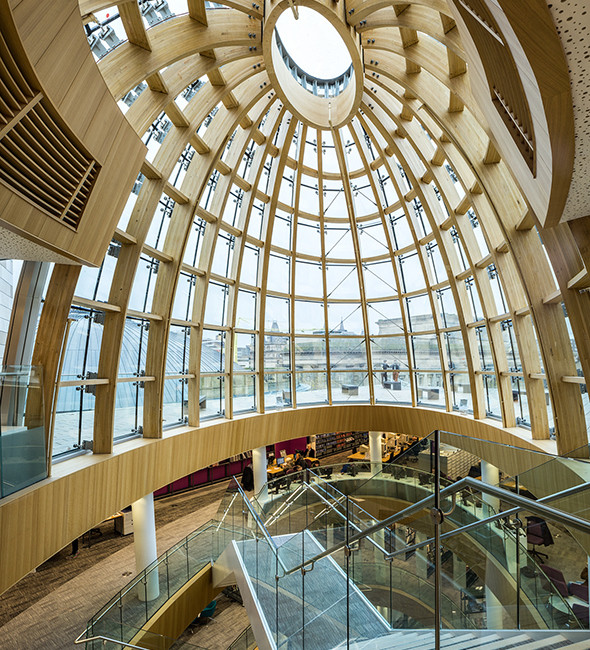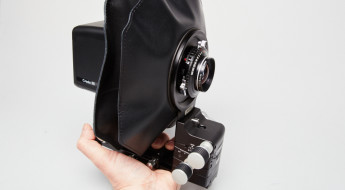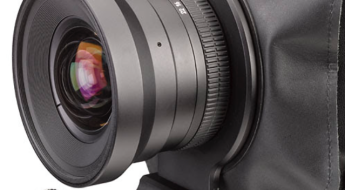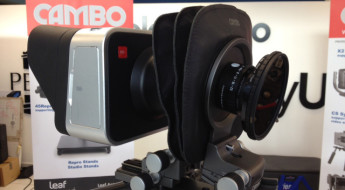
Over the years I have chatted with Craig at exhibitions and several Cambo open days, like most photographers today, he was looking for a portable architectural camera system that he could use with his DSLR.
When the Actus came along he was keen to get his hands on one and was delighted when we offered him a test run with his camera system. Craig is a big Canon user, he has the 5D MkII and a wide range of lenses that has been a considerable investment over the years.
Before we met up he went ahead and tested the Sony A7R, was suitable impressed with the quality and purchased the camera body. This together with a Metabones adapter gave him some flexibility as he could use his Canon lenses.
After juggling between our diaries we fixed a day to meet in Liverpool, UK. Craig’s main objective was to test out the Actus with the Sony A7R and Canon 24mm TS-E II lens. His main criticism of using adapters and TS lenses in general is that they don’t quite stitch evenly, which leaves him with a lot of post production work and the pain of sitting in front of a laptop when he should be behind the camera. The images we captured on the day looked great in camera, however Craig remained skeptical – until he saw the final images on-screen.
After seeing how well the architectural shots were stitched, Craig was eager to push the test further and shoot the interior of the Liverpool Central Library designed by Austin-Smith:Lord.
Image info: Camera Landscape – 3 shot vertical stitch, 15mm rise, 10mm fall.
Craig: “Currently I stitch wider views with the 24mm TS-E by shifting the lens diagonally. This works well, but I always have slight stitching errors that I need to fix. I was keen to try the Actus as the rear shifts should provide error free stitching, saving me time in post.”
Image info: Camera Landscape – 4 shot stitch, 4mm rise, 5mm fall, 7mm left/right shift.
Craig: “With the ‘manual’ mount you have to preset the aperture of the lens before attaching it to the Actus. This isn’t a big issue as I only ever use the 24mm at F11 anyway, and its an easy process to do using either a Canon body or the Sony with a Metabones adapter.”
Image info: Camera Landscape – 3 shot vertical stitch, 15mm rise, 10mm fall.
Craig: “Liverpool Central Library where kind enough to let me test the Actus there, providing some great interior design as subject matter. The images shown are all captured with the Sony A7R and Canon 24mm TS-E II lens, then processed and stitched in the latest version of Lightroom CC, which has already cut down post processing time for me, allowing me to skip stitching in separate software. The advantage of the rear shifts was instantly visible, all of the stitched DNG’s where free from errors meaning that the tiff’s I output only needed tiny tweaks, if needed, in PS before resizing and saving as Jpegs.”
Image info: Camera Landscape – 4 shot stitch, 5mm rise/fall, 9mm left/right shift with a slight crop to the top.
Craig:“In use the Actus feels solid and precise, with all movements nice and smooth. The friction movement is fine and smooth and the indents at 5mm does help for quick movements. While I didn’t use the swing or tilt, I can see them being useful in the future for landscape work, as well as the bellows extension for the occasional macro work I get. I have my order in for an Actus.”
Image info: Camera Landscape -4 shot stitch, 5mm rise/fall, 10mm left/right shift.
Charles: Thanks Craig it was a good test for us to do as we have a lot of Canon users that are looking to keep their existing lenses but also have the possibility of using the Actus with a mirrorless camera for the really wide shots.
Image info: Camera Landscape – 3 shot vertical stitch, 15mm rise, 10mm fall. Cropped to trim the bottom.
















Leave a Comment